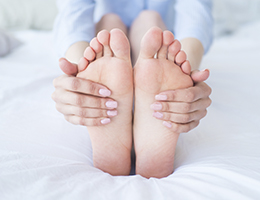
Think about diabetes, and topics such as high blood sugar and the importance of eating right may come to mind. But skin care is an important part of the picture too.
Along with damage to the heart, nerves, eyes and kidneys, diabetes can also harm the skin. Sometimes skin problems provide the first clue that a person has diabetes, according to the American Diabetes Association (ADA).
Spotting and treating these problems early can provide relief and help prevent dangerous infections that could lead to amputation.
Be on the alert for possible problems
According to the ADA, the skin problems that diabetes may cause include:
Itching. Poor circulation caused by diabetes can make skin itchy, especially on the lower legs. To ease symptoms, limit how often you bathe. Also, use mild soap with moisturizer and apply skin cream after bathing.
Fungal infections. These infections can trigger moist, itchy rashes that appear as red areas surrounded by tiny blisters and scales.
The infections usually occur in warm, moist folds of the skin—under the breasts, between fingers and toes, and in the armpits and groin. A doctor can prescribe medicine to help treat them.
Bacterial infections. Several types of bacterial infections can affect people with diabetes, including:
- Styes—infections of the glands in the eyelids.
- Boils or folliculitis—infections of the hair follicles.
- Infections around the nails.
- Carbuncles—deep infections of the skin and tissue underneath.
Infected areas are usually hot, red, swollen and painful. Bacterial infections can be treated with antibiotics.
Diabetic dermopathy. Diabetes can cause changes in small blood vessels resulting in light-brown, scaly patches on the skin. The patches may be oval or round and are sometimes mistaken for age spots. Usually they appear on the front of both legs. The patches are harmless, don't hurt or itch, and don't require treatment.
Necrobiosis lipoidica diabeticorum. Another condition caused by blood vessel changes, this disorder results in fewer—but larger and deeper—spots than diabetic dermopathy.
The condition usually starts as a dull-red, raised area. Eventually it starts to look like a shiny scar with a violet border. Blood vessels under the skin may become easier to see. Sometimes the spots are painful and itchy, and they can crack open. The condition is rare and affects women more often than men. Treatment isn't needed unless the sores break open, according to the ADA.
Eruptive xanthomatosis. Out-of-control diabetes can result in this condition, which causes firm, yellow, pealike enlargements on the skin—often on the backs of hands, feet, arms, legs and buttocks.
It usually occurs in young men with type 1 diabetes. The bumps usually disappear once diabetes is under control.
Digital sclerosis. This condition results in thick, waxy skin on the backs of the hands. As a result, finger joints may stiffen and be difficult to move normally. Skin on the toes and forehead also may become thick. The condition occurs in about one-third of people with type 1 diabetes.
Disseminated granuloma annulare. This condition results in raised ring- or arc-shaped areas on the skin—often on the fingers or ears. The areas can be red or skin-colored. The condition can be cleared up with medicine.
Acanthosis nigricans. Tan or brown raised areas on the sides of the neck, armpits and groin are the hallmark signs of this condition. It's most common in people who are very overweight. Losing weight helps resolve the condition.
Allergic reactions. Insulin or diabetes pills may cause allergic skin reactions. Let your doctor know if you're having a reaction to medicine.
Protect your skin
Managing your diabetes reduces your risk for skin problems, according to the ADA.
Following these tips can help too:
- Prevent dry skin by applying standard skin lotion, but don't put it between your toes.
- Avoid taking very hot baths or showers. Use mild shampoos, and avoid bubble baths if your skin is dry.
- Treat wounds right away. Wash them with soap and water. See a doctor immediately for major cuts, burns or infections.
- Check your feet daily for sores and cuts. Poor circulation caused by diabetes can reduce sensation in the feet, so you may not feel a wound. Plus, lack of blood in the feet reduces the body's ability to fight off infection and heal. All of this boosts the risk for serious infections that can lead to amputation.
Keep things under control
Diabetes is a serious disease, but it can be controlled. That means staying on top of skin problems, along with other aspects of managing the disease.
Reviewed 6/3/2025